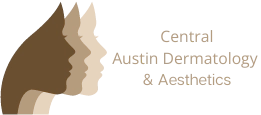What is Molluscum Contagiosum?
Molluscum contagiosum is a common viral skin infection. It most often affects infants and young children but adults may also be infected.
It presents as clusters of small round bumps (papules) especially in warm moist places such as the armpit, groin, or behind the knees. They range in size from 1 to 6 mm and may be white, pink, or brown. They often have a waxy, pinkish look with a small central pit (umbilicated). As they resolve, they may become inflamed, crusted, or scabby. There may be few or hundreds of spots on one individual.
Molluscum contagiosum is a harmless virus but it may persist for months or occasionally for a couple of years. It may rarely leave tiny pit-like scars.
It induces dermatitis in the affected areas, which are dry, pink, and itchy. An itchy rash may sometimes appear on distant sites and represents an immunological reaction or ‘id’ to the virus.
How do you catch Molluscum Contagiosum?
It can be spread from person to person (especially children) by direct skin contact. This appears to be more likely in wet conditions, such as when children bathe or swim together. Sexual transmission is possible in adults. It may arise in areas that have been injured, often because they’ve been scratched. The papules form a row; this is known as koebnerized molluscum.
Molluscum contagiosum is a harmless virus but it may persist for months or occasionally for a couple of years. It may rarely leave tiny pit-like scars.
It induces dermatitis in the affected areas, which are dry, pink, and itchy. An itchy rash may sometimes appear on distant sites and represents an immunological reaction or ‘id’ to the virus.
Diagnosis of Molluscum Contagiosum?
Molluscum is usually recognized by its characteristic appearance clinically or on dermatoscopy. White molluscum bodies can often be expressed from the centre of the papules. Sometimes, diagnosis is made on seeing the histopathological features on skin biopsy.
Molluscum Contagiosum Treatments
Medical treatments include:
- Minor surgery, curettage (topical anesthetic cream may be applied first), or laser ablation
- Cryotherapy
- Cantharidine
- Imiquimod cream
- Wart paints containing salicylic acid or podophyllin
Schedule an appointment with one of our medical providers to see which treatment is best for you.

